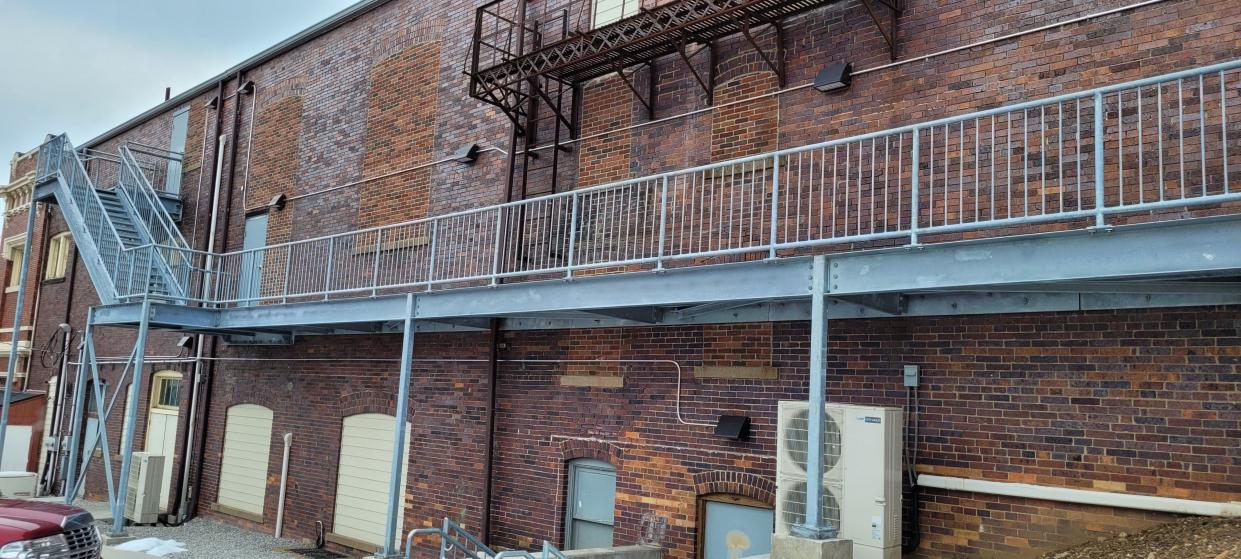Ohio Theatre fire escape, funded in part by state, is ready for emergencies

LOUDONVILLE − A year later than hoped, a new stainless steel fire escape on the south side of the Ohio Theatre/Loudonville Office Building, 156 N. Market St., is finally open.
The fire escape, which mirrors a similar one on the north side of the building that opened in 2017, was made possible through a grant from the Ohio Facilities Construction Commission (OFCC).
Total cost of the project, according to Loudonville Fiscal Officer Elaine Van Horn, was $404,400, of which $200,000 was paid by a grant from the OFCC, with the remainder paid from village funds, $186,500 from income tax funds and $17,900 from local fiscal recovery funds.
Bolstering development, creating economic stimulus
According to J. B. Benton, spokesman, the OFCC oversees capital improvement funds for planning, construction, renovation and expansion projects at Ohio’s theaters, museums, arts education facilities, historical sites and publicly-owned professional sports venues.
“These grants help bolster community development and provide economic stimulus by creating jobs, serving as tourist attractions, and providing children with creative learning experiences,” Benton said.
The fire escape project brings the theater, also known as the Loudonville Opera House, into compliance with safety regulations and handicapped accessibility codes. Wheelchair bound persons can access the balcony level of the theater by using the new fire escape and the one built five years ago.
Van Horn said $353,000 of expenditures involved construction costs, and $51,400 for engineering and professional services. Contractor for the project was E. Lee Construction, Delphos, engineer was Osborne Engineering, Cleveland, and architect Prospectus Architecture of Cleveland.
Benton noted the Loudonville project was unique among OFCC projects because it involved a fire escape.
“I am aware of only one other OFCC project involving a fire escape, that in a facility in Delaware,” Benton said.
Unavailability of stainless steel delayed the project, upped the cost
Timing was difficult for the Loudonville project.
“It took place in a time of supply delays,” Loudonville Village Administrator Garret DeWitt said. “The ultimate completion of the project was delayed for nearly a year because the stainless steel used in the fire escape was unavailable,” DeWitt said.
Delays also caused a major increase in the project cost.
Estimate for construction when the project was bid was “under $260,000,” according to figures provided by DeWitt. “Ultimate construction cost was $353,000.”
Scope of the project involved “demolition of the existing fire escape and replacing it with new fire egress stairs, ramps and egress lighting, infill of existing masonry openings, installation of new egress doors in the upper balcony and balcony, reworked stage egress and drainage, and associated site work.”
“With this project, along with earlier work to build handicapped accessible restrooms and the fire escape on the north side of the building, I think we are up to code,” theater Director Sally Hollenbach said.
DeWitt said he felt uncomfortable commenting on the project, since it was for the most part undertaken and overseen by his predecessor Curt Young. DeWitt became village administrator last summer.
This article originally appeared on Ashland Times Gazette: Fire escape around Loudonville Ohio Theatre/Village Offices complete

